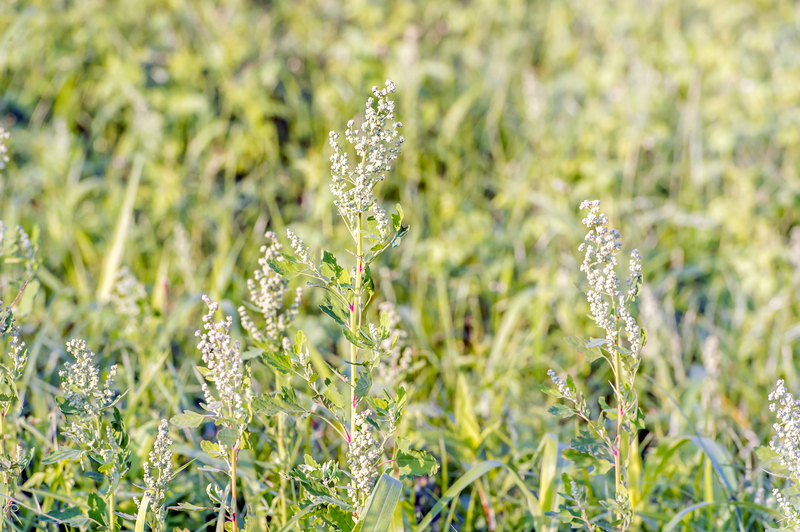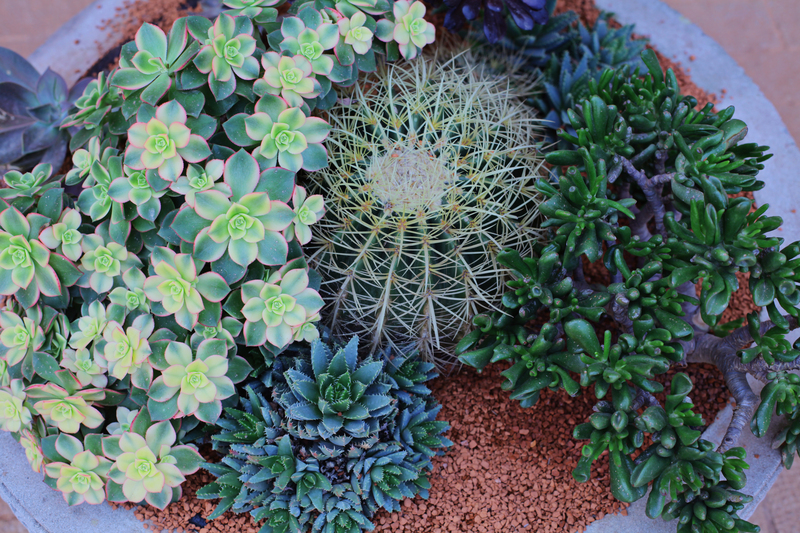Harnessing Vertical Gardening for Urban Resilience
Posted on 09/06/2025
Harnessing Vertical Gardening for Urban Resilience
Urbanization has swept across the globe, bringing with it dense cityscapes, concrete jungles, and often a disconnect from nature. However, amidst these changes, innovative solutions are sprouting up to make our cities more resilient, livable, and green. One such innovation is vertical gardening. In this comprehensive guide, we will explore how vertical gardening can be harnessed for urban resilience, unveiling its benefits, practical implementations, and the pivotal role it plays in sustainable city living.
What is Vertical Gardening?
Vertical gardening, sometimes referred to as living walls or green walls, is the practice of growing plants vertically, often using structures such as walls, trellises, or stacked planters. Unlike traditional horizontal gardens, vertical gardens maximize the use of vertical space, making them perfect for urban environments where ground area is limited.
- Living Walls: Large panels of soil or hydroponic systems installed on building facades, balconies, or fences.
- Trellis Systems: Using climbing plants and climbing supports like wires or nets attached to walls.
- Stacked Planters: Multi-level containers and pots that enable vertical growth on patios, rooftops, or small yards.

The Importance of Urban Resilience
Urban resilience refers to a city's ability to absorb, recover from, and adapt to unexpected challenges such as climate change, natural disasters, food insecurity, pollution, and rapid population growth. As urban challenges intensify, the integration of vertical gardening into cities is becoming increasingly essential for:
- Enhancing Environmental Quality
- Improving Food Security
- Mitigating Urban Heat Island Effect
- Increasing Biodiversity
- Encouraging Community Engagement
How Vertical Gardening Supports Urban Resilience
1. Reducing Urban Heat Island Effect
Cities often experience significantly higher temperatures than rural areas--a phenomenon known as the urban heat island effect. Concrete and asphalt absorb and radiate heat, while lack of vegetation exacerbates the problem. Vertical gardens provide a solution by:
- Shading building facades and reducing surface temperatures
- Cooling air through the natural process of evapotranspiration
- Cutting urban energy demands for air conditioning, thus lowering carbon emissions
2. Enhancing Air Quality
Air pollution is a persistent urban issue, impacting public health and environmental quality. By harnessing vertical gardening, cities can:
- Increase the surface area of plants able to capture particulate matter and filter out harmful pollutants
- Boost oxygen production and reduce carbon dioxide concentrations
- Help mitigate the impact of traffic and industrial emissions
3. Improving Urban Food Security
One of the most powerful aspects of vertical gardens for urban resilience is their potential to offer accessible, sustainable food sources:
- Enable the cultivation of vegetables, herbs, and fruits in limited or non-traditional spaces
- Shorten food supply chains and reduce dependence on distant agricultural land
- Promote local, organic food production, improving nutrition and reducing food miles
4. Stormwater Management
Fluctuating weather patterns and heavy rainfall events pose serious risks to urban infrastructures. Vertical gardens contribute resilience by:
- Absorbing rainwater, decreasing runoff and easing pressure on city drainage systems
- Delaying water flow and preventing floods and soil erosion
- Purifying stormwater as it passes through living walls' roots and substrate
5. Enhancing Biodiversity
Urban biodiversity can be severely limited due to habitat loss and fragmentation. Through vertical gardening, urban spaces can:
- Provide habitat and food for pollinators, birds, and beneficial insects
- Create green corridors that connect fragmented ecosystems
- Restore native plant communities in dense city landscapes
Practical Applications of Vertical Gardening in Urban Environments
Residential and Commercial Building Facades
Green facades on apartments, offices, hotels, and commercial centers transform bare walls into vibrant living tapestries. Besides their aesthetic value, these vertical systems:
- Boost property value
- Improve insulation and regulate building temperatures
- Provide privacy and reduce noise pollution
Community Gardens and Shared Urban Spaces
Many cities now embrace community-based vertical gardens, where citizens participate in the cultivation of shared, vertical food and flower gardens. These initiatives can:
- Foster social connection and encourage green living
- Provide fresh produce for local residents
- Serve as educational hubs for sustainable practices
Institutional and Public Settings
Schools, hospitals, libraries, and government buildings are integrating vertical garden walls to create healthier and engaging atmospheres. These installations:
- Enhance well-being and productivity
- Offer hands-on learning experiences for students
- Publicize environmental stewardship
Urban Agriculture and Rooftop Farming
With city planners seeking more sustainable solutions for food production, vertical gardening is a perfect fit for rooftop farms and urban agriculture projects, where traditional gardening would be unfeasible.
- Converts unused rooftops into food-producing green spaces
- Mitigates urban heat while providing fresh, local produce
- Creates jobs and entrepreneurial opportunities
Getting Started with Vertical Gardening for Urban Resilience
1. Assess Available Space and Sunlight
Whether you live in a high-rise apartment or own a corner lot in the city, evaluate vertical spaces that receive sufficient sunlight. Common options include balcony railings, fence walls, and sunlit building exteriors.
2. Select the Right Plants
Choose plant varieties suited to your local climate, available sunlight, and desired purpose (edible, decorative, pollinator-friendly). Popular choices for urban vertical gardens include:
- Edibles: lettuce, kale, strawberries, tomatoes, basil, mint
- Flowering plants: nasturtium, petunias, geraniums
- Climbers: ivy, jasmine, passionflower, sweet peas
3. Choose an Appropriate System
A variety of systems support vertical gardening in urban spaces, ranging from simple DIY solutions to advanced hydroponic living walls.
- Pocket Planters: Fabric or plastic pouches attached to walls, perfect for herbs and small greens
- Pallet Gardens: Upcycled wooden pallets fitted with containers for rooting medium
- Hydroponic Panels: Soil-less systems ideal for high-density urban environments and commercial facades
4. Installation and Maintenance
Proper installation is vital for longevity and success. Secure structures to support the weight of wet soil and mature plants. Consider efficient irrigation systems, such as drip irrigation or automated watering, to ensure consistency. Regular maintenance includes:
- Monitoring plant health and nutrient needs
- Pruning, harvesting, and replacing dead vegetation
- Checking for pests and diseases
Key Benefits of Vertical Gardening for Urban Resilience
- Space Optimization: Vertical gardening unlocks growing potential where land is limited, making gardening accessible to more city dwellers.
- Energy Efficiency: Living walls and green facades reduce heating and cooling costs by acting as natural insulators.
- Sustainable Food Production: Community and rooftop gardens improve urban food security while reducing reliance on imported goods.
- Mental and Social Well-being: Green spaces relieve stress, improve air quality, and provide a sense of belonging and achievement.
- Improved Urban Aesthetics: Vertical gardens transform dull buildings, increasing urban beauty and biodiversity.
Challenges and Solutions in Urban Vertical Gardening
1. Structural Limitations
Not all urban buildings can support the weight and moisture requirements of large vertical gardens. Consult architects and engineers for suitable installation methods, and start with lighter, modular systems if unsure.
2. Water and Nutrient Management
Vertical gardens have unique watering needs. Implement automated irrigation and choose fast-draining substrates to prevent root rot. Regularly perform soil tests and adjust nutrients as needed.
3. Plant Selection and Pest Control
Select resilient plant species and practice integrated pest management (IPM) to minimize the risks of infestations. Mixing plant types can also guard against the spread of disease.
4. Community Engagement
Fostering community participation ensures proper maintenance and the long-term success of public vertical gardens. Educational workshops and volunteering opportunities can inspire residents to take ownership and pride in their local environment.
Case Studies: Urban Resilience Through Vertical Gardening
- Singapore's "City in a Garden": The city-state is globally renowned for its lush green skyscrapers and innovative vertical farming systems, which have significantly reduced urban temperatures and improved food self-sufficiency.
- Madrid's CaixaForum Living Wall: One of Europe's tallest vertical gardens, it provides a biodiversity hotspot while keeping the building cooler and improving neighborhood air quality.
- New York City's Rooftop Farms: Numerous building rooftops now host thriving vertical and horizontal gardens, supplying restaurateurs and residents with fresh produce while absorbing stormwater.

The Future of Vertical Gardening in Urban Resilience
As global cities strive for sustainability, cleaner environments, and adaptable infrastructures, the role of vertical gardening for urban resilience will only grow. Advances in hydroponic technology, IoT-driven irrigation, and biophilic design are making it more feasible and affordable than ever to introduce vertical gardens at scale.
Conclusion: Greening the Future of Our Cities
By embracing vertical gardening, urban areas can unlock a multitude of benefits--creating cooler, cleaner, healthier, and more resilient cityscapes. Every wall, balcony, and rooftop represents an opportunity not just to beautify our surroundings, but to protect ourselves from environmental threats, foster food security, and build stronger, more cohesive communities.
The time to harness vertical gardening for urban resilience is now. Let your city grow upward, not just outward--and be part of the resilient green revolution.

